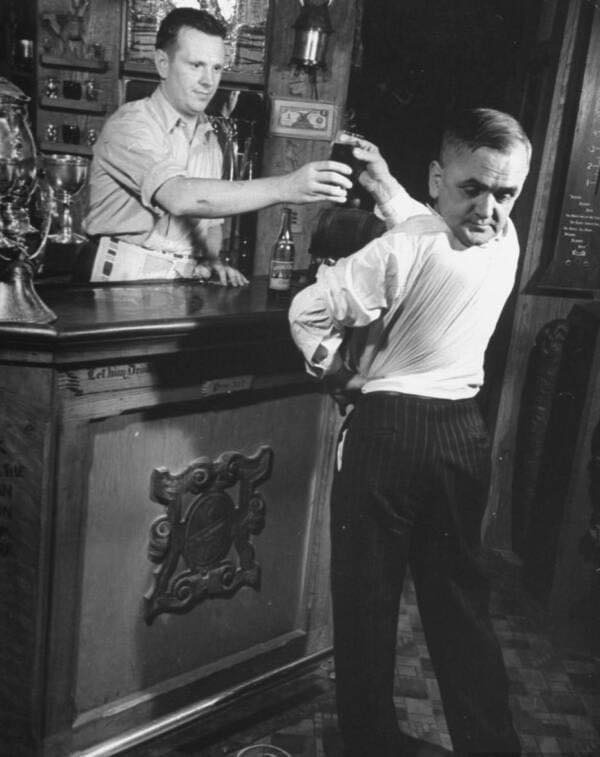Martin Laurello: The Human Owl Who Could Turn His Head 180 Degrees
At the turn of the 20th century, America was a land of opportunity, attracting waves of immigrants in search of a better life. During this wave of migration, circuses and sideshows flourished, offering a mix of thrilling performances and oddities.
One standout performer was Martin Laurello, who wowed crowds with his incredible ability to turn his head completely backward. His amazing trick earned him the nickname “Human Owl,” and he quickly became a sensation.
Sideshows during this era were known for their daring acts and unique performers. From lion tamers to sword swallowers, the shows were filled with jaw-dropping feats.
At the same time, they often featured people with physical differences and put them on display for public fascination.
It was the peak of P.T. Barnum’s career, where the bizarre was turned into big business, and Laurello’s head-turning act was a perfect fit for this world of spectacle.
The rise to fame as the ‘Human Owl’

Martin Laurello stood out in the world of sideshows, not because he looked unusual but because of his extraordinary talent.
Unlike many of his peers, he didn’t have an inherently odd appearance. Instead, his striking ability to turn his head 180 degrees was a result of years of rigorous training, not a natural gift.
Born Martin Emmerling in Nuremberg, Germany, in 1885, he changed his name to Martin Laurello upon arriving in the United States in 1921.
Whether he chose this new name or it was assigned to him during immigration remains a mystery, but it soon became synonymous with his incredible act.

Laurello was among the many Europeans who crossed the Atlantic in search of a new life, but his story was unique. He dedicated three years to mastering the art of turning his head beyond 120 degrees, and his skill quickly garnered attention.
He first showcased his remarkable trick at Coney Island’s Dreamland Circus Sideshow, a venue famous for its eclectic and daring acts. His performance earned him the nickname “Human Owl”.

In addition to his famous head-turning act, Laurello could perform everyday tasks like drinking beer while his head was fully rotated. However, he couldn’t smoke or breathe easily while in this position.
His act was advertised under the banner “Bobby The Boy With The Revolving Head,” a term used for sideshow performers regardless of their actual age.

Laurello also performed with the Ringling Bros. and Barnum & Bailey Circus, but during winter months, he transitioned to indoor venues.
At Hubert’s Museum in New York, he worked alongside other notable sideshow acts like sword swallower Alex Linton, strongman Charlie Felton, and Roy Heckler, who was known for his flea circus.
The toll on his personal life

After dazzling audiences with his incredible head-turning act at Hubert’s Dime Museum, Martin Laurello found fame at Ripley’s Believe It or Not! Odditorium in the 1930s. He was advertised as “the only one in the world who can walk straight ahead and look straight behind.”
While Laurello was a star on stage, behind the scenes, his personal life was unraveling. He married Laura Precht and had a son named Alexander, but the marriage ended in divorce.
His second marriage to Emilie Wittl also failed, culminating in a dramatic arrest for spousal abandonment. On April 30, 1931, while performing his act in Baltimore, Laurello was arrested after his second wife lodged a complaint.

According to The New York Times, Laurello humorously winked at the officers during his arrest while performing his signature head-turning trick, “He was standing on a platform with his back to the crowd, looking right at his audience.”
Adding to his complex controversy were accusations of Nazi sympathies. After leaving Germany shortly after World War I, Laurello was rumored to have supported Adolf Hitler.
This was during a time when Hitler was named TIME’s “Man of The Year” in 1938. “He was a Nazi,” claimed former colleague Percilla Bejano.
The legacy of Martin Laurello

Despite the secrecy surrounding his later life, his talent continued to be celebrated. A replica of his head was showcased in Times Square and at the 1939-1940 World’s Fair in New York.
Laurello’s last known performance took place in 1952, just before he passed away from a heart attack.
There have been many theories about how Laurello managed his incredible head-turning act. Some people believed he had to “dislocate several vertebrae” to achieve his unique skill, while others thought he was born with a “twisted” spine.
Without x-ray images to confirm any of these theories, the true nature of his ability remains unknown. Laurello himself once claimed that anyone could learn the trick with enough practice.

